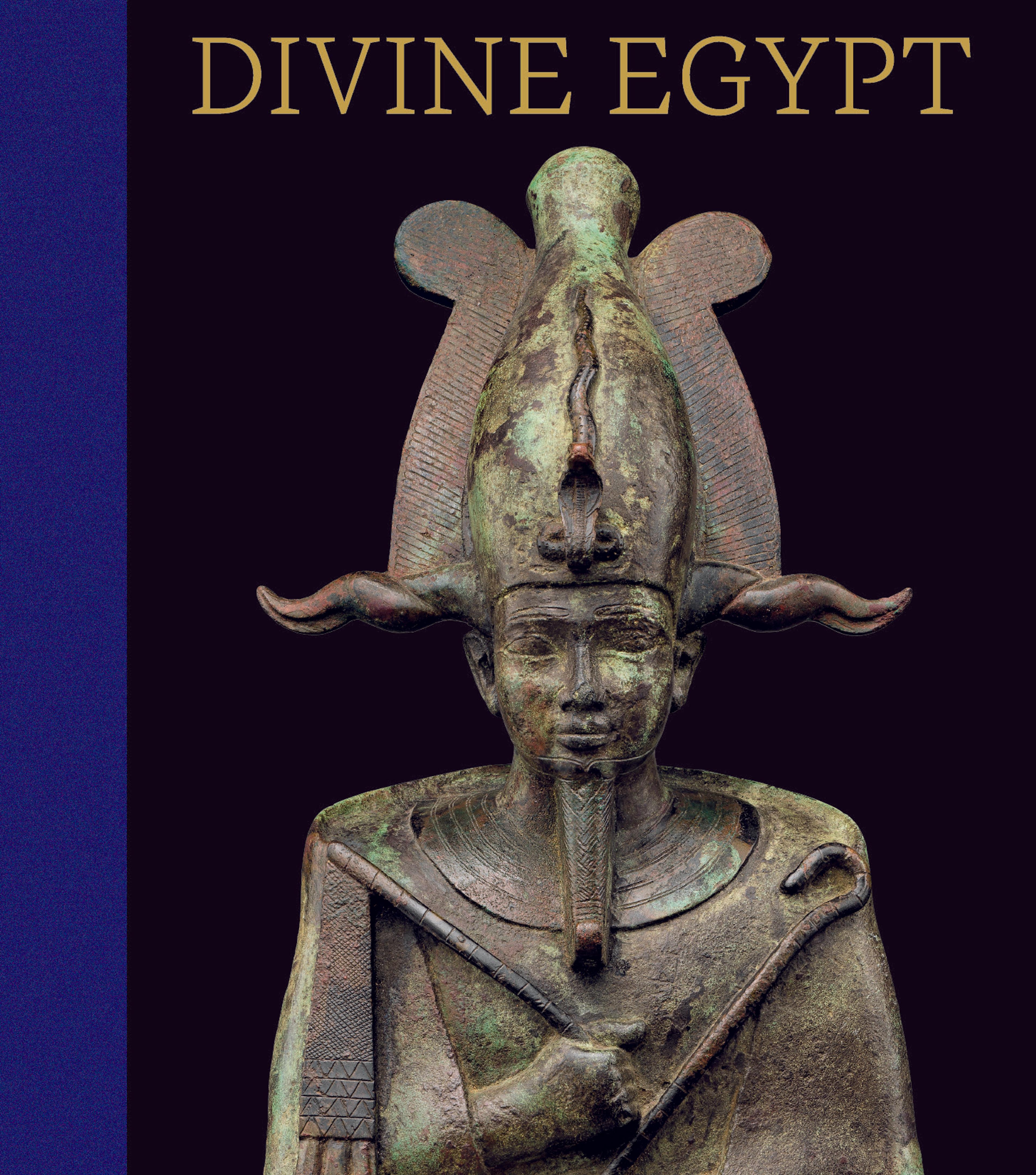Seated goddess Nephthys, inscribed for Mereskhonsu
The bright gilded silver statuette of the goddess Nephthys is worked with precision and elegance.
The basket-sign is broken away from the emblem on top of her head that represents her name, and three sides of her throne are corroded away. An inscription on the underside of the statuette’s base (pictured below) reads: "words spoken by Nephthys, who embellishes the chapels, who gives life, prosperity, health and a long life to Mereskhonsu, justified." The hieroglyphs are calligraphic even to the extent of subverting the images: the n-sign, normally a zigzag replicating waves of water, has become a tightly twisted ribbon; the s-sign, representing a door bolt passing through two catches, is decomposed into two discontinuous elements.
The phrasing of the inscription and a loop behind the goddess’s head reveal that the statuette was a pendant donated for use in a temple. In this case, the pendant probably belonged to the Mereskhonsu who was the mother of Akhamenru, Chief Steward of the Divine Wife Shepenwepet II, and who was herself titled a Great Follower of Shepenwepet II. Possibly she wore the pendant in order to embody the protection of Nephthys for the Divine Wife.
The basket-sign is broken away from the emblem on top of her head that represents her name, and three sides of her throne are corroded away. An inscription on the underside of the statuette’s base (pictured below) reads: "words spoken by Nephthys, who embellishes the chapels, who gives life, prosperity, health and a long life to Mereskhonsu, justified." The hieroglyphs are calligraphic even to the extent of subverting the images: the n-sign, normally a zigzag replicating waves of water, has become a tightly twisted ribbon; the s-sign, representing a door bolt passing through two catches, is decomposed into two discontinuous elements.
The phrasing of the inscription and a loop behind the goddess’s head reveal that the statuette was a pendant donated for use in a temple. In this case, the pendant probably belonged to the Mereskhonsu who was the mother of Akhamenru, Chief Steward of the Divine Wife Shepenwepet II, and who was herself titled a Great Follower of Shepenwepet II. Possibly she wore the pendant in order to embody the protection of Nephthys for the Divine Wife.
Artwork Details
- Title:Seated goddess Nephthys, inscribed for Mereskhonsu
- Period:Third Intermediate Period–Late Period
- Dynasty:mid-Dynasty 25–early Dynasty 26
- Date:ca. 715–650 BCE
- Geography:From Egypt
- Medium:Silver, gilded
- Dimensions:H. 6.4 × W. 2 × D. 4 cm (2 1/2 × 13/16 × 1 9/16 in.)
- Credit Line:Purchase, Liana Weindling Gift, 2014
- Object Number:2014.159
- Curatorial Department: Egyptian Art
More Artwork
Research Resources
The Met provides unparalleled resources for research and welcomes an international community of students and scholars. The Met's Open Access API is where creators and researchers can connect to the The Met collection. Open Access data and public domain images are available for unrestricted commercial and noncommercial use without permission or fee.
To request images under copyright and other restrictions, please use this Image Request form.
Feedback
We continue to research and examine historical and cultural context for objects in The Met collection. If you have comments or questions about this object record, please contact us using the form below. The Museum looks forward to receiving your comments.
